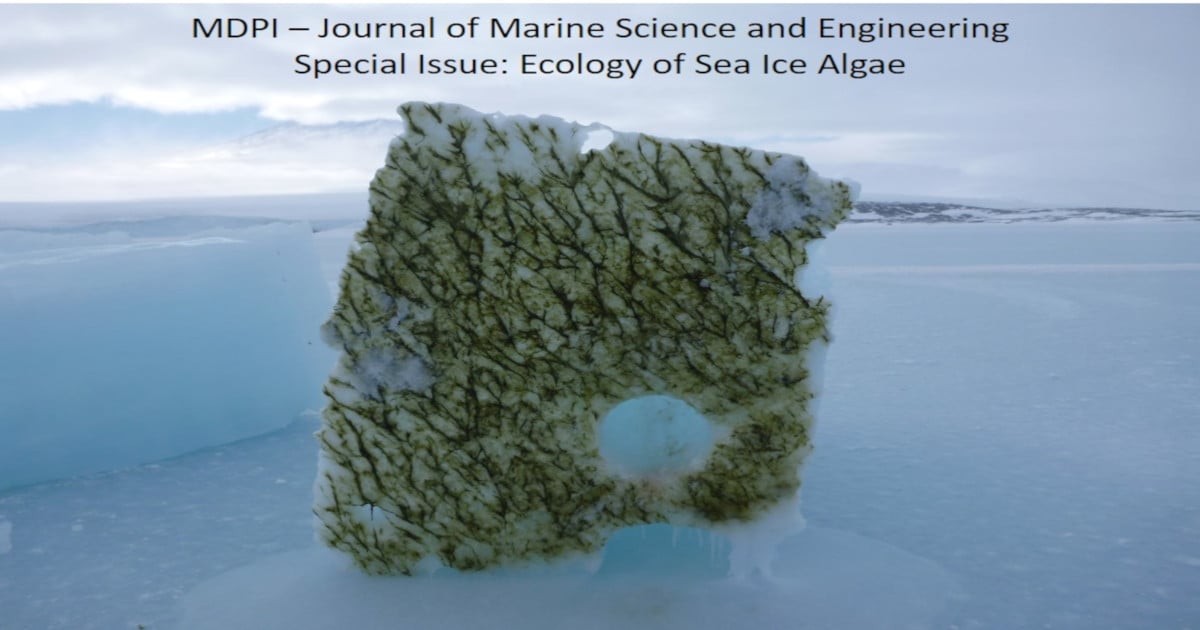- 2.8Impact Factor
- 5.0CiteScore
- 16 daysTime to First Decision
Ecology of Sea Ice Algae
This special issue belongs to the section “Marine Environmental Science“.
Special Issue Information
Dear Colleagues,
Sea ice algae play a significant and important role in polar regions. They are the only carbon source in the food chain during the ice-covered spring period in which light increases, though also regulated by the snow cover. The question is: how can low-light-adapted ice algae cope with the foreseen decrease in snow cover thickness and increased light transmittances? What are the effects of these factors on the ecology of sea ice algae and their trophic importance regarding decreasing sea ice extent? What is the importance of sea ice algae in the exchange of CO2 between atmosphere, sea ice, and water? There is a need for ice algae-sympagic biota interactions and more detailed studies of sympagic–pelagic–benthic couplings. The purpose of the invited Special Issue is to publish new research with a focus on the ecological role of sea ice algae and their ecology.
The Special Issue will publish high-quality papers on the following topics from both the Arctic and Antarctica:
- Trophic relations;
- Adaptation strategies;
- Modelling;
- New techniques;
- Seeding by ice algae;
- Ice algae and bacteria;
- Extreme environment.
Assoc. Prof. Dr. Lars Chresten Lund-Hansen
Guest Editor
Manuscript Submission Information
Manuscripts should be submitted online at www.mdpi.com by registering and logging in to this website. Once you are registered, click here to go to the submission form. Manuscripts can be submitted until the deadline. All submissions that pass pre-check are peer-reviewed. Accepted papers will be published continuously in the journal (as soon as accepted) and will be listed together on the special issue website. Research articles, review articles as well as short communications are invited. For planned papers, a title and short abstract (about 250 words) can be sent to the Editorial Office for assessment.
Submitted manuscripts should not have been published previously, nor be under consideration for publication elsewhere (except conference proceedings papers). All manuscripts are thoroughly refereed through a single-blind peer-review process. A guide for authors and other relevant information for submission of manuscripts is available on the Instructions for Authors page. Journal of Marine Science and Engineering is an international peer-reviewed open access monthly journal published by MDPI.
Please visit the Instructions for Authors page before submitting a manuscript. The Article Processing Charge (APC) for publication in this open access journal is 2600 CHF (Swiss Francs). Submitted papers should be well formatted and use good English. Authors may use MDPI's English editing service prior to publication or during author revisions.
Keywords
- Trophic relations
- Adaptation strategies
- Modelling
- New techniques
- Seeding by ice algae

Image courtesy of Dr. Lars Chresten Lund-Hansen
Benefits of Publishing in a Special Issue
- Ease of navigation: Grouping papers by topic helps scholars navigate broad scope journals more efficiently.
- Greater discoverability: Special Issues support the reach and impact of scientific research. Articles in Special Issues are more discoverable and cited more frequently.
- Expansion of research network: Special Issues facilitate connections among authors, fostering scientific collaborations.
- External promotion: Articles in Special Issues are often promoted through the journal's social media, increasing their visibility.
- e-Book format: Special Issues with more than 10 articles can be published as dedicated e-books, ensuring wide and rapid dissemination.

